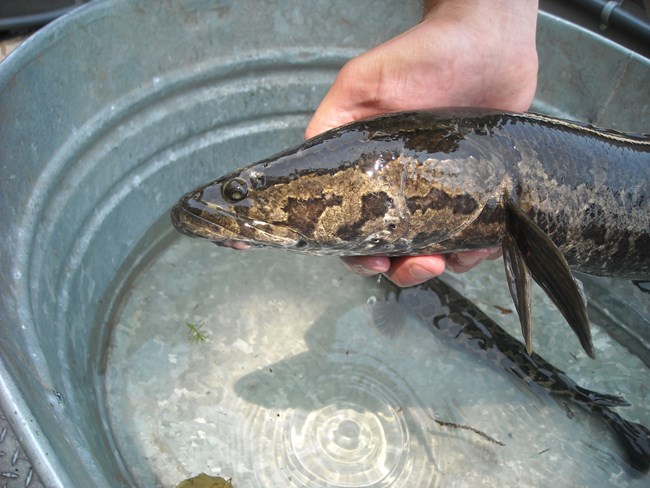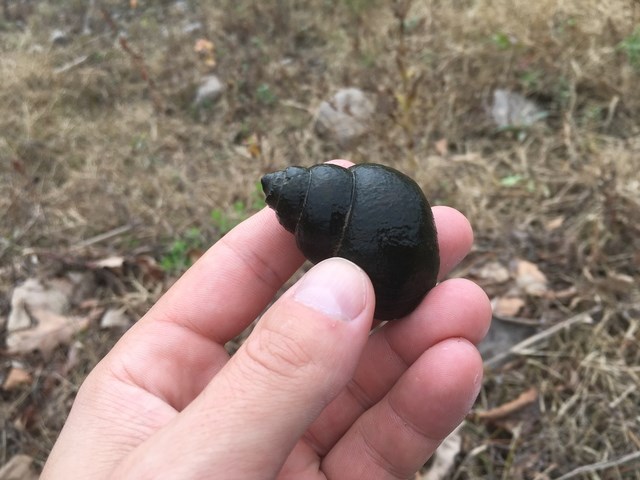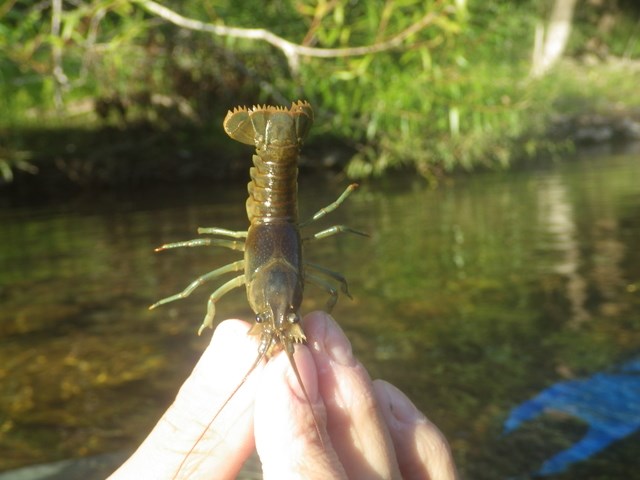
Pennsylvania Fish and Boat Commission Northern SnakeheadChanna argus The Northern Snakehead is a predatory invasive fish species that can be found in the Upper Delaware River, but is native to Asia. It is suspected that Northern Snakeheads were most likely introduced through the dumping of home aquaria and releases from fish markets. Currently, people contribute to the spread of Northern Snakeheads by illegally using them as bait or unknowingly transporting them in water-containing areas of boats. Northern Snakeheads are mostly brown with dark splotches along the body. They have a long, torpedo shaped body and a flattened, pointed head with long lower jaws. As adults, Northern Snakeheads eat a variety of prey including other fish species, crustaceans, reptiles, mammals, and even small birds. Northern Snakeheads can drastically alter aquatic ecosystems and devastate native fish populations. It's important to prevent the establishment of Northern Snakeheads because once they are established, they can be difficult to control. Some methods for controlling established populations of Northern Snakeheads include trap nets or electrofishing. 
National Park Service MysterysnailChinese Mysterysnail (Cipangopaludina chinensis) or This invasive snail has a relatively large olive colored snail with a conical shell. Native to Southeast Asia, Japan, and Eastern Russia, this snail was first introduced in a food market in San Francisco in the late 1800s. Now, a species of mysterysnails can be found grazing on the bottom of the Upper Delaware River in slower moving water. 
National Park Service Rusty CrayfishFaxonius rusticus The Rusty Crayfish is an invasive crustacean that has been found in a tributary of the Upper Delaware River. It is native to a portion of the Ohio River Basin. Bait bucket emptying by anglers is considered the primary cause of introductions of Rusty Crayfish to waterbodies. Rusty Crayfish have a brownish-green body and are between 3.5 and 10 cm in length. When introduced, the Rusty Crayfish is quite aggressive and tends to outcompete and displace native crayfish species. Due to its high metabolic rate, the Rusty Crayfish has a large appetite and can consume significant amounts of submerged aquatic plants which are important to many fish species for protection from predation. This behavior also results in reduced aquatic plant abundance and diversity. Controlling a population of Rusty Crayfish once established is a difficult task; using chemicals may harm other native species. Methods that have shown some success include trapping and encouraging native predators to consume Rusty Crayfish. |
Last updated: March 27, 2025
